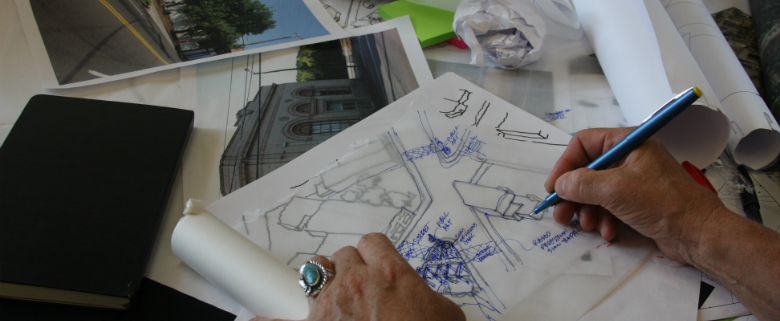Blog Post featured on ArtPlace America in August
Glass House Collective is a Chattanooga-based nonprofit working to revitalize a corner of that former industrial city. Focused on East Chattanooga, specifically a commercial corridor called Glass Street, the group works to bring “life back to Glass Street and Glass Street back to life” through creative projects and events that animate the space. ArtPlace spoke with Katherine Currin, director of Glass House Collective, about the organization’s benchmarks for success.
What do you have to do really (really) well to achieve success with your initiative? How do you expect the community to change as a result?
The answer is pretty simple, but the execution is tougher. Our project’s success hinges on how thoroughly it inspires and engages East Chattanoogans.
Perceptions around the Glass Street corridor today are that of an abandoned and dangerous neighborhood. One of the most important tasks at Glass House Collective is to prove—to ourselves, our neighbors, and our city—that this is actually a site of great vibrancy and opportunity. We’re set to show that this “forgotten” neighborhood can thrive, with support from creative and entrepreneurial residents.
We know that place-making can incite a renewed sense of ownership in those who know a neighborhood best—in a word, that creative projects can jump-start the forging of homegrown pride.
To that end, we’ve focused on the arts and on incentivizing projects for individual artists. Our first phase of work begins with the design and installation of street benches, trash receptacles, bike racks and bus shelters. From there, we’ll introduce artisan signage, basic façade enhancements, murals and green space improvement across the corridor. All the while, we’ll be working with East Chattanoogans to commission temporary animations, including art installations, pop-up shops and movies. Additionally, we will be providing brick-and-mortar support for community meetings and partner programs.
And already, East Chattanooga is earning a reputation as a transformed neighborhood—a trajectory we hope will continue. By acknowledging the role that the arts play in residential and commercial revitalization, our partners and neighbors are demonstrating new enthusiasm for a once overlooked area.
Big picture: we’re not just asking changemakers to re-imagine a neighborhood, we’re asking them to put individual artists and creativity at the heart of their work—here and today, elsewhere and in the future.
to view the article on Artplace America’s website.











Leave a Reply
Want to join the discussion?Feel free to contribute!